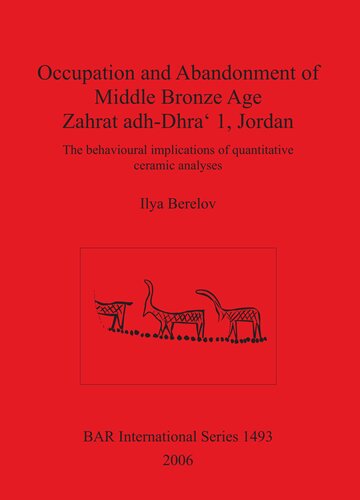

Most ebook files are in PDF format, so you can easily read them using various software such as Foxit Reader or directly on the Google Chrome browser.
Some ebook files are released by publishers in other formats such as .awz, .mobi, .epub, .fb2, etc. You may need to install specific software to read these formats on mobile/PC, such as Calibre.
Please read the tutorial at this link: https://ebookbell.com/faq
We offer FREE conversion to the popular formats you request; however, this may take some time. Therefore, right after payment, please email us, and we will try to provide the service as quickly as possible.
For some exceptional file formats or broken links (if any), please refrain from opening any disputes. Instead, email us first, and we will try to assist within a maximum of 6 hours.
EbookBell Team

4.3
18 reviewsIn his study of the inhabitants of Zahrat adh-Dhra' 1 on the Dead Sea Plain of Jordan, the author presents a behavioral study of a Bronze Age community and provides a useful and complimentary addition to the enormous body of archaeological work conducted on chronology, culture history and trade in the southern Levant. This monograph takes as its focus the controversial realm of ancient behavior. The author's detailed approach arises from the specific necessities surrounding investigations into behavior through archaeological materials and the broad range of materials employed in this work includes subsistence, trade, housing, the preparation of food, waste management, as well as attitudes to communal activities and levels of permanence. Thestudy makes full use of all these variables and tries to understand them within a framework of site formation processes – so crucial to interpretations of material evidence. The result is a comprehensive picture of a unique community, isolated from its contemporaries and living out a frugal existence in a harsh and marginal setting – the inhabitants of Zahrat adh-Dhra' 1 on the Dead Sea Plain of Jordan. The author has attempted to portray accurately ongoing behavioral tendencies, thereby contributing to our knowledge of south Levantine Bronze Age society.